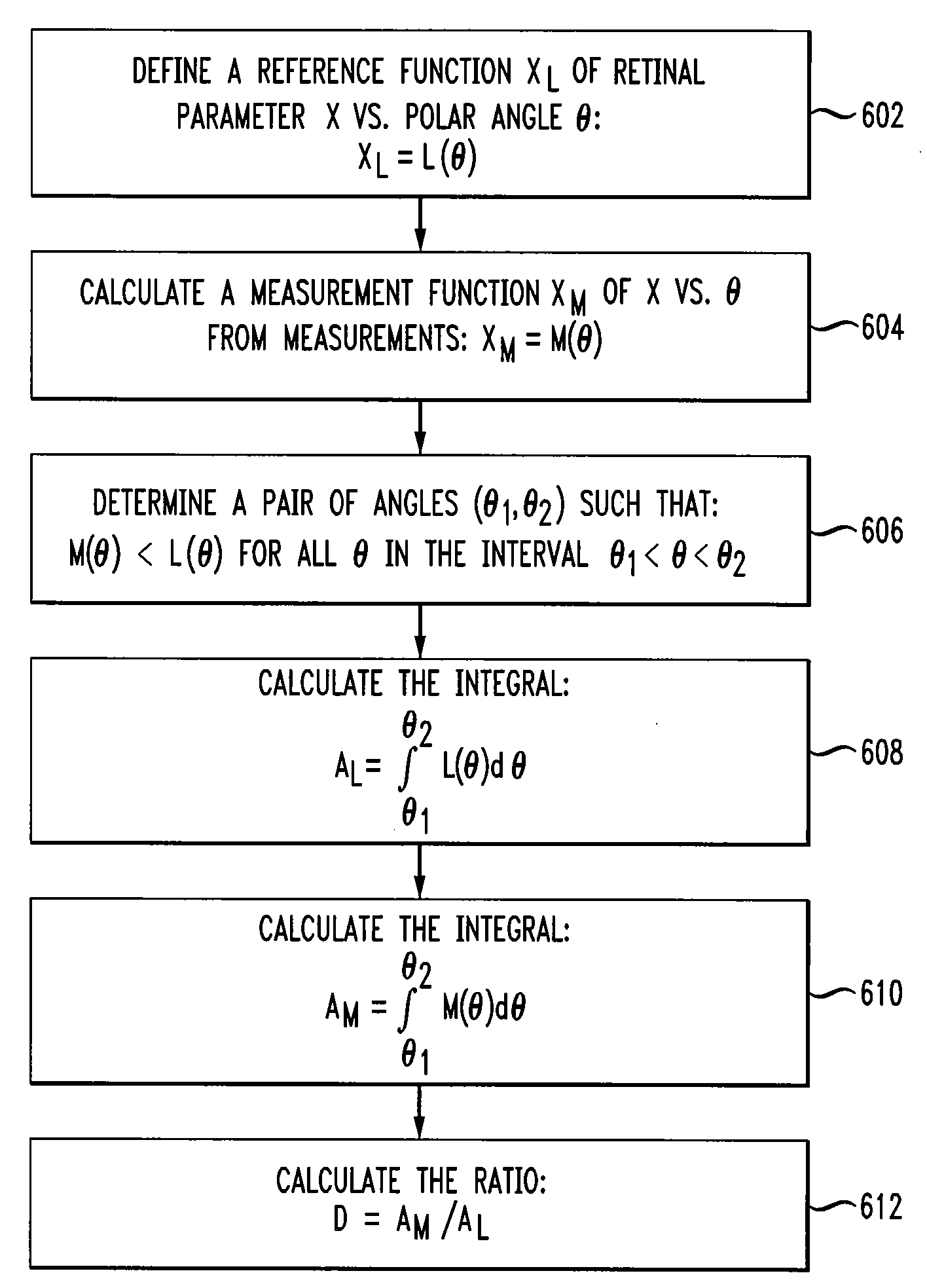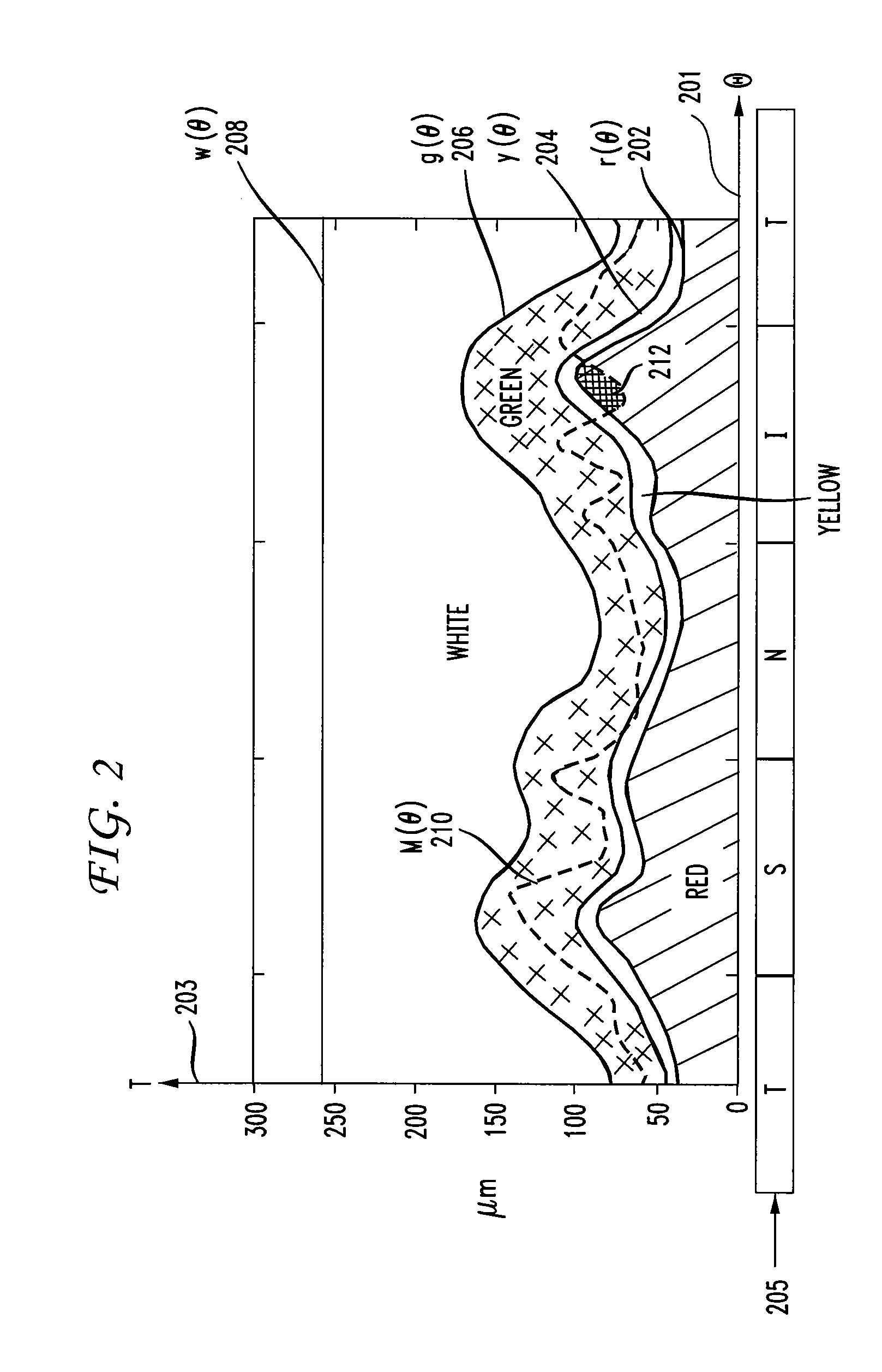Characterization of Retinal Parameters by Circular Profile Analysis
a circular profile and retinal technology, applied in the field of ophthalmic characterization, can solve the problems of no mechanism for providing consistent local variation detection, no mechanism for detailed tracking of the growth of retinal defects over time, and no mechanism for associating anomalous thickness measurements with the presence of blood vessels or other anatomical features
- Summary
- Abstract
- Description
- Claims
- Application Information
AI Technical Summary
Benefits of technology
Problems solved by technology
Method used
Image
Examples
Embodiment Construction
[0022]FIG. 1A-FIG. 1C are schematic representations of conventional retinal thickness plots of data (also referred to as circle scans) measured with a Zeiss Stratus OCT 3 or similar ophthalmological instrument. Measurements are taken along a circle with a center at the nominal center of the optic disc and with a radius fixed at 1.73 mm. The angular orientation of measurement loci along the circle are referenced with respect to TSNIT geometry, where T=Temporal, S=Superior, N=Nasal, and I=Inferior. The measurements along the circle are divided into groups defined by arcs. The number and orientation of the arcs are arbitrary and defined by a user (such as an eye doctor). For measurements along each arc, the average thickness is displayed.
[0023]In FIG. 1A, plot 110 displays measurements divided into four arcs, arc 111-arc 114. Note that the dashed radial lines are used only to aid demarcation of the arcs in the figures. The measurement loci fall only along the arcs, not in the regions ...
PUM
 Login to View More
Login to View More Abstract
Description
Claims
Application Information
 Login to View More
Login to View More - R&D
- Intellectual Property
- Life Sciences
- Materials
- Tech Scout
- Unparalleled Data Quality
- Higher Quality Content
- 60% Fewer Hallucinations
Browse by: Latest US Patents, China's latest patents, Technical Efficacy Thesaurus, Application Domain, Technology Topic, Popular Technical Reports.
© 2025 PatSnap. All rights reserved.Legal|Privacy policy|Modern Slavery Act Transparency Statement|Sitemap|About US| Contact US: help@patsnap.com



